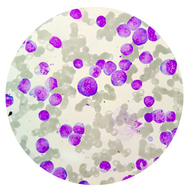Chimeric Antigen Receptor Comprising CD123 Binding Domain and IL-7 Intracellular Signaling Domain for combination T Cell Therapy
TECHNOLOGY NUMBER: 2018-238

OVERVIEW
Combined chimeric antigen receptor technology with targeted therapies for AML- Signaling through IL-7 that sensitized T cells to low density antigens in AML
- An approach that may prove useful for treatment of other hematologic malignancies
BACKGROUND
Acute myeloid leukemia (AML) accounts for about 45,000 new cases each year worldwide, and it is associated with rapid progression in the blood and bone marrow of affected patients. The disease is caused by damage to myeloid cells that normally exist in the bone marrow as precursors to red blood cells, white blood cells, and platelets. Risk factors for developing AML include age greater than 65 years, male gender, prior exposure to radiotherapy or chemotherapy, blood disorders, or certain genetic abnormalities. AML has historically been treated with traditional chemotherapy regimens, though the results from this approach have yielded suboptimal results due to the persistence of leukemia stem cells (LSCs). Newer strategies for treating AML have focused on targeting cancer specific genes through the production of antibodies or chimeric antigen receptors that initiate the body's own immune system. While advances have been made in these types of therapies, a need exists for additional research and development of novel approaches to treat AML using immunologic approaches.
INNOVATION
Researchers at the University of Michigan have created a technology that combines chimeric antigen receptor technology with targeted therapies such as IL-7 to the CD123 entity for the treatment of patients with cancers such as acute myelogenous leukemia (AML). CD123, which is also known as the interleukin-3 receptor alpha chain (IL-3Ralpha), is commonly overexpressed in AML, while interleukin-7 (IL-7) plays a key role in the development of T and B cells as they target cancer cells. The investigators show that signaling through IL-7 sensitizes T cells to low density antigens in the setting of AML, providing a means by which to develop treatments that are more targeted and robust. These T cells can then be activated using more traditional cell engineering approaches to recognize and kill cells in a tumor-associated, antigen-dependent manner. This treatment pathway is also associated with a decrease in off-target toxicity. This novel approach may prove effective in treating other hematologic malignancies.